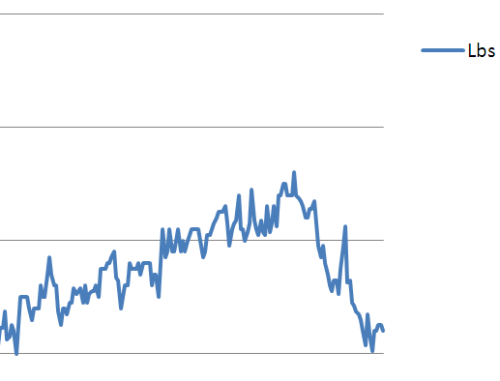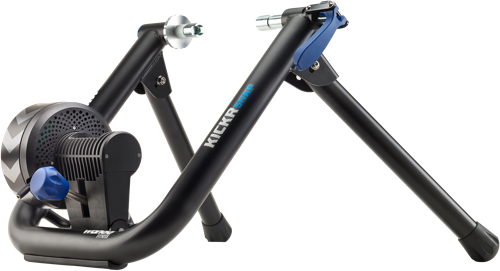So, I had decided to attack the Marmotte again – mainly because the fear of it keeps me disciplined about losing weight etc. It’s like the ‘sword of Damocles’!
On the weight front, I switched to ‘intermittent fasting’ on Mondays and Wednesdays – by skipping breakfast and lunch. That has meant a steady reduction in weight down to 162.25 lbs at my lowest – just over a pound over my target, so I was quite plesased, especially as I had two extended overseas trips in May and June, with lots of temptation. That’s 20lb down on two years ago and 14 down on last year – 66.75 down on 2006. Although I don’t feel fat, I could reduce my body weight more, I think.

That was the good news. The less positive news is that I really found it hard to boost my FTP power level. Improving power to weight really needed a significant improvement in power. I have been using the plans in ‘The Time Crunched Cyclist’ and was pretty careful to stick to them. I went from the experienced century training plan to the endurance mountain bike plan. Work meant I didn’t get as many hours in as I would have liked, but steadily built up my workload to get to a Chronic Training Load of over 60 – well above what I thought I had done in 2012/2013 (although I wonder if I recorded all the rides so carefully in 2012/13).

Golden Cheetah has a good way of recording the critical power from rides, but I just haven’t got the numbers that I got in 2012/13 in critical power. I have read that there is a big variation in the ‘trainability’ of different individuals. I suspect that I may be ‘just not that trainable’. Certainly, when I first started to try to get fit thirty years ago, my coach had to give me a very intense workload after his initial plan didn’t seem (in his view) to make much difference.
I decided to stay with M. Lefebvre at the gite in Ornon. It’s well placed (it’s downhill to the start of the Marmotte) and I know it well. The Col d’Ornon is good for shorter work outs in a ‘taper’ week. I should have called him directly, as I could have booked for a non-standard stay, as a ‘regular’, but I booked through Gites de France, which is Saturday to Saturday only. Having done that, I found that the race had moved a couple of years ago to Sunday, so I had to frantically scramble to find a place for the two nights in Alpe d’Huez. I found something, but it was just about the last place! Liam wasn’t keen to try this time and Mike had arrangements with another friend, so I decided to go solo.
I travelled down fine, staying in Northern France after an afternoon ferry. I also invested in a Sanef chip for the French motorway tolls. I wish I had done that earlier! It was great, just driving through the toll gates and there were no dramas getting down to the Alps.
Bernard asked me if I could change gites to the lower of the two that he has as he had a bigger group booked. That worked for me – I would have booked the smaller if I had seen it available, anyway. He kindly refunded the difference in cost (and kindly posted me the books I left behind!)

I was in the lower gite – which was great!
I spent the week working, including a couple of days at Leti, in Grenoble – a high tech research institute. They were having an open day, by luck, so I got a good report from it. Bernard was very hospitable and I enjoyed a barbecue ‘en famille’, which was really great.
Anyway, I followed a proper taper in my training, but otherwise, just worked! I tried Alpe d’Huez and it was obvious to me that I should have done more mountain-style work outs – I could feel the difference in the muscles being used in my legs and that wasn’t a good sign. In particular my inner thigh muscles seemed to be working harder than I had expected. They did ease up through the week, though.
I transferred to the (tiny) apartment in Alpe d’Huez on the Saturday and registered and handed over my medical certificate. I decided not to use special food as Cyclomundo, who I had booked with, because they supply some food support towards the end, had decided to drop that support point. So, the only advantage of not booking directly with the organisers was to get a guaranteed place. Hmmm, I wouldn’t book with them again unless there was no alternative.
Anyway, I got down to the start and found I was fairly well positioned at the start of the second group. I lost a bit of position when we went to the official start as we were sent the wrong way! However, we got there OK and I rolled over the line as planned. So far, so good,
The first climb is the long Col du Glandon (which is most of the climb to the Croix de Fer). I had decided to try to match my times on the 2012 event, as I was too slow on the 2013 one. That basically worked, and I was putting out a steady 175W but I was worried as my heart rate was towards my lactate threshold, which I reckon is around 153/154 as I tired over the climb. Over the climb, I was basically between 147 and 152 bpm.

Lots of people were going past me and I passed few. The climb went well, although I had a bit of a fright towards the top, when a rock rolled off the mountain and nearly hit a rider just a few bike lengths in front of me!
I got some food at the top, but didn’t want to waste time, so pressed on. The weather was very cold, about 10 degrees C at the start and down to 6 degrees by the top of the Glandon, but I saw that as an advantage. The arm warmers hardly came off at all and in preparation, I was wearing roubaix shorts with leg warmers, which didn’t come off all day!
The descent from the Glandon was great and then there was the long ‘false flat’ to St Michel de Maurienne. I should have got into a group. In the end, by grabbing a wheel, I probably wouldn’t have done more work overall, but would have saved some time.
I was well on track when I grabbed some water at the bottom of the Telegraphe. On the last two rides, this is where heat had really played a negative role, but this time it was only 20 degrees at the start. It cooled as we rose and it was nowhere near as hot as the previous two attempts. By the Telegraphe, I was going reasonably well and passing people who weren’t quite aware of the monstrosity that the ride is. By the top of the Telegraphe, there were quite a few who were ‘cooked’. At that point, I was reasonably confident.

I got to the feedstop in Valloire feeling in reasonable shape and, broadly, on time. However, there was very little food – I got some fruit and some dry bread. That was the same as last time and it’s really a poor show that they run out of decent food – it’s not as though this is a cheap event and at that point I was a long way from the last person! I had some bars with me, so was existing on them, although I just can’t take the sugar in this kind of thing these days and was suffering quite a bit of gastric discomfort.
I set off up the Galibier, but after only about half an hour of the climb, I started to feel that my inner thigh was going to cramp and I had to get off the bike to try to ease and stretch. I decided to keep moving by walking and after the cramp seemed to have receded, I got back on the bike. However, I didn’t get far before it started again. That became the pattern, with the ascent just being about walking and occasional periods of riding. The slow rate of progress was a killer as it meant that I was getting behind schedule – the walking got slower as we ascended.
With still a couple of (slow) kilometres to go to the top, I realised that I could no longer make it to the cut off point at the bottom of Alpe d’Huez before the elimination time and I nearly gave up. By that point, a lot of people were struggling with cramp and other problems. I was nowhere near the weakest! One chap I talked to from the a club near my home was giving up for the fourth time – he has done the Marmotte six times – twice successfully and with four failures!

As the altitude got higher, I started to really struggle for oxygen and I found that even at around 128 bpm of my heart (steady gentle ride intensity), I was panting as though I was in a TT! It seemed worse than in previous years – which could be an effect of age or the low temperatures.
(late addition – on the way up the Galbier (iirc), a keen photographer was photographing some big birds that were circling. Someone shouted to him “What are the birds?”. “Vultures”, he responded. Clearly they understood our condition!)
I got to the top of the Galibier and it was horrendous. The temperature was down to 7 degrees and there was a howling gale over the pass. Fortunately, after the first 10 ks or so of the descent, the effect of the sun helped to raise the temperature, and my spirits, a bit. I genuinely enjoyed most of the descent.
Eventually, I made it to the bottom of Alpe d’Huez. Although I had sworn that, whatever happened, I would make it up the Alpe, I knew by the state of my legs on the few uphill parts of the long descent from the Galibier, that it would take me many hours even to walk up the hill, so I baled and took the bus.

So that was it; round three and the score is Marmotte 3, Bob 0. Even though I had trained for fifteen months and lost the weight I wanted, it was beyond me. The reality is that to meet the times I needed to do, I had to go too hard and that meant I couldn’t sustain the effort for long enough. Without another 50W or more, in my FTP, even with the reduced weight, I just can’t go fast enough up the climbs without going too hard.
I may have to accept that this ride is just beyond me. However, I haven’t, quite, done that yet. I don’t think I can do it in 2018, but maybe 2019, with another two years of training? I suspect not, but I will give it some serious thought.
Some things learned:
- Feeding has to be sorted – sugary bars are really no good for an event of this duration. I knew that, really, but it has been a while since I did such an event, and not since I went to LCHF.
- I need to calculate the W/kg needed to get over this event.
- I should have benefited from the cooler conditions – if it had been hotter, I think I would have failed sooner.
- You really need a lot of miles in your legs to do this kind of event
- You also really need to have done a lot of serious climbing – the effect on the muscles is different when climbing.
- I may think about a coach or coaching service if I’m going to do it again.
M. Lefebvre has said that he would give me a special deal for a longer stay. Maybe, in 2018 a month in the Alps, just for training – and maybe the Vaujany race? Reduced workload and back in 2019?

















